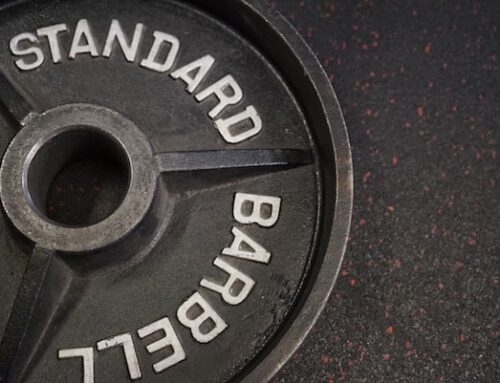#BootyGains are what all of us are striving for, so squatting is a must! Squats are one of the most effective exercises to build and strengthen the glutes…if you do them correctly. Let’s talk about five ways to improve your squat, and make sure you’re getting the MOST out of your efforts in the gym.
1) Glute Activation
While there’s a lot to remember during a squat, some of the work can be done beforehand in what is known as glute activation. Glute activation is the process in which you prepare and activate your muscles for the work they are about to do.The purpose of glute activation is to warm up your glutes and to get that mind-muscle connection going between your head and the muscle you want to be working during exercise. Think of it like an alarm clock; wake those glutes up and get ready for some squats! Here are three of my favorite glute activation techniques.
Clamshells
Clam shells are perfect for firing up those glutes. Lie on your side with your hips, knees and ankles all bent at 90 degrees. If you have a band, secure it right below the knees and raise your top knee up (keeping your heels together). Click HERE for a Demonstration.
Single leg glute bridges
Lying flat on the ground and keeping your core tight, bend your knees and keep your feet flat on the floor. You should be lying flat on your back with your knees bent. Once you are in position, raise one leg up into the air, keeping both knees in line. Raise your hips through the heel of the planted foot and squeeze your glutes at the top, then slowly lower your hips to the starting position. This will really isolate the glutes and get you ready to squat! Click HERE for a Demonstration.
Lateral side steps
I do these before EVERY leg day. You will need a b-force mini loop band (or a similar exercise band) to do this exercise. Start by placing your band just below your knees, get in a low squat position and take a side-step left to right; making sure you squeeze your glutes and keep your knees pushed outward. It’s the perfect exercise to fire up your glutes. Click HERE for a Demonstration.
2) Improve Ankle Mobility
Who knew that your ankle mobility could play such an important role in your squats? To test ankle mobility place your foot flat on the floor five to six inches away from a wall and try to touch your knee to the wall keeping your heel down flat on the ground. You should be able to touch the wall with your knee, however, if you cannot continue this stretch and improve over time.
If you are noticing that your ankles are tight, or you have one ankle with better mobility than the other, try some foam rolling or bent-knee calf stretches. When doing the calf stretch, make sure your knee is bent to really hit the Achilles tendon. This will improve your ankle mobility over time, which will improve your squat!
3) Strengthen Your Hamstrings and Low Back
We want our hamstrings and lower back to be strong and developed to help make the most out of our squats. To do that, below are three of my favorite exercises to help build a strong lower back:
Back Extension
Back Extensions are perfect for targeting your posterior chain – the key is to focus on your glutes and hamstrings by squeezing at the top. Start this exercise by lying face down on the back extension machine. Once you are in place, fold your arms across your body and slowly raise your upper body towards the ceiling without arching your back or looking up, straightening your body at the hips. To complete the exercise, slowly lower your upper body to the starting position. Click HERE for a Demonstration
Good Mornings
To target the deep muscles in the lower back, try good mornings. Start by placing a barbell over your shoulders similar to a back squat. Once the barbell is in place, slowly bend over at the hips until your back approaches parallel to the floor, keeping your back straight the entire time with the weight in your heels. Slowly return to the starting position to complete the exercise. Click HERE for a Demonstration.
Cobra Pose
Cobra pose is ideal for increasing the flexibility of the thoracic spine and it also helps stretch out tight shoulder and chest muscles – all of which improve bracing during your squat session. To do the cobra pose, start by lying flat on your stomach, place your palms face down on the floor near your armpits and slowly press into the floor lifting your chest in the air. Be sure to keep your hips on the floor through the entire exercise. To return to the starting position, slowly lower your chest back to the floor. Click HERE for a Demonstration.
4) Release Tight Hip Flexors
Tight hip flexors can be a common culprit in squat form. If you’re really tight in the front of the hips, it’s going to be tough to complete a full squat correctly. Keep those hip flexors loose!
Forward Lunge Stretch
The forward lunge stretch is a great way to open up those hip flexors. Start by taking a long lunge stride forward, slowly lowering your back knee to the ground. Once you are in position, drive your hips forward to stretch out your hip flexor on the back leg and hold the pose for up to 30 seconds. Click HERE for a Demonstration.
Pigeon Pose
One of my favorite yoga poses to help open up your hip flexors is the pigeon pose. This stretch can be very intense, so ease into it. Begin this stretch by kneeling on the floor with your knees sitting under you. Move your right leg back until it is almost straight (hands to the floor to help your balance) with the top of the foot flat on the ground. Gently move the left foot forward until the left shin is almost perpendicular to your torso (everyone’s range of motion will be different here). Continue sliding your right foot back until you can “sink” your hips into the floor carefully. If you are in this position and you are feeling a good stretch, then hold this position for up to thirty seconds. If you are needing more of a stretch, bend at your hips and slowly lower your chest towards the floor. Go as far as you can comfortably while maintaining good breathing, and hold that position for up to thirty seconds. Click HERE for a Demonstration.
5) Increase Thoracic Spine Mobility
Thoracic spine mobility is fancy lingo for upper back flexibility, and it’s really important for a good squat.
Try the eagle pose or any upper body twisting yoga poses or stretches. Downward dog is also a great way to help that Thoracic Spine Mobility. As your thoracic spine loosens, you will be able to hold a squat bar more comfortably, maintain a strong brace during the squat and focus on your glutes!
There’s SO much information and tips on proper form and technique for squats on the Jessie’s Girls Facebook group. You can find videos on my YouTube exercise library too! If you’re not sure about your squat, share a video with Jessie’s Girls and they will be happy to help you with form questions and concerns.
If you want even more detailed tips like this, be sure to check out my Jessie’s Girls Training Programs. With every purchase of a Jessie’s Girls Training Program, you get access to the Jessie’s Girls Facebook Group, a private Facebook group full of women just like you looking to improve their physique, get stronger and become the best version of themselves. Click on the button below for more information on all of my training programs.






Leave A Comment
You must be logged in to post a comment.